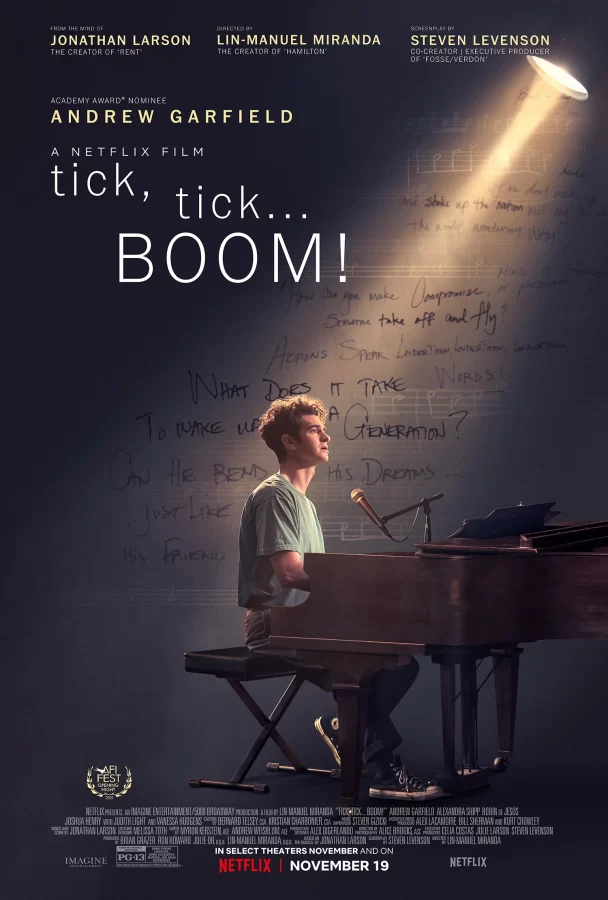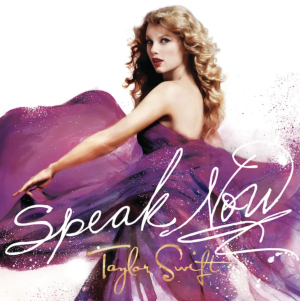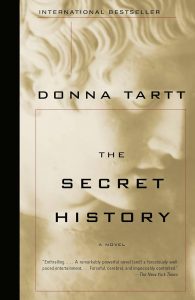‘Tick, Tick… Boom!’: A Legacy Preserved in Music
January 18, 2022
Lin-Manuel Miranda’s directing debut Tick, Tick… Boom! tells the story of the theatrical composer who inspired his own creativity: Jonathan Larson, creator of the hit musical, Rent.
Larson wasn’t well known for most of his lifetime. Most of his time was spent just getting by as a writer who could barely afford New York life. Larson left behind what I think of as one of the best musicals of all time: Rent, the iconic rock musical focusing on New York City during the height of the HIV epidemic. Larson passed away at 35 from a sudden aortic aneurysm the night before the musical’s opening. In addition to Rent, Larson left behind another, lesser-known musical: Tick, Tick… Boom!, an angst-filled, semi-autobiographical story of being a playwright in New York.
Before I knew anything about Larson, it was awfully hard to distinguish his never-produced musical, Superbia, from Tick, Tick…Boom!, which is Larson’s story of writing Superbia. Very confusing. Then came “Rent,” his musical about friendships and about writing musicals (how familiar). And finally, Miranda created another masterpiece: a movie adaptation of Larson’s life, in the form of Tick, Tick…Boom!
Larson loved to base many of his musicals off of others, or based on his own life. Superbia was based on George Orwell’s dystopian novel “1984”—although he was denied the rights. The flop of the startup musical led to a monologue, an “intense, angry solo,” Anthony Tommasini, a music critic, said in a 1996 New York Times interview.
This monologue gave birth to Tick, Tick…Boom! One thing led to another, and Rent was born in 1996, just after Larson passed. The adaptation of Larson’s second musical follows the story of the nearly thirty-year-old writer and tells unknown details of his childhood and close friendships.
Larson introduces himself in the adaptation as “a musical theater writer, one of the last of my species,”. Little did he know that a superbly popular member of his species would be telling his story roughly thirty years later. Lin Manuel-Miranda, creator of Hamilton, saw Rent at seventeen, one year after its release on Broadway. After composing for and producing various movies, he was drawn to the idea of telling the story of a fellow playwright.
As I watched the adaptation, I was amazed by the beautifully incorporated music written by Larson himself, as well as the fantastic castings.
Andrew Garfield delivers a Golden Globe-winning performance as Jonathan Larson. If you look at two pictures of Garfield and Larson side by side, their images are strikingly similar. This perfect casting by Bernard Telsey was one of the things that really stood out to me as I watched this adaptation. Even Larson’s friend Micheal (Robin de Jesús) and girlfriend Susan (Alexandra Shipp) had similarities to their characters as well.
In addition to his physical similarities to Larson, Garfield flawlessly portrays the personality of the aspiring playwright. He is scatterbrained and utterly devoted to his writing, a trait that causes him to alienate his loved ones in times of need.
The movie opens with Larson at the piano, ranting about the upcoming doom of his thirtieth birthday, leading into the song “30/90” – which has recently been blowing up on TikTok. The stress of his upcoming birthday that he associates with a lack of success as a theatrical composer weighs on him throughout the movie.
Tick, Tick… Boom! is an autobiography of anxieties. Throughout the musical, Larson fixates on how to achieve success—whether it be in his startup musical Superbia or in his close relationships. He struggles with both, lacking a crucial song in his musical that he needs for the approaching workshop, and drifting away from his best friend, Michael, who is diagnosed with AIDS in the third act. He also fails to communicate with his girlfriend Susan, who breaks up with him and takes a job of her own, moving away from the city.
Instead of spiraling out of control and expanding the adaptation into a worldwide story of adversity in the theater world, Miranda was devoutly focused on Larson’s story and kept it realistic – which was a big part of why I liked it so much.
Larson’s relationship with Susan was an accurate depiction of what real-world relationships are like, riddled with communication issues and real emotions, not just sunshine and butterflies. The heart-wrenching scene where Larson finds out Micheal has AIDS depicts the heartbreak that many experienced during the epidemic.
Miranda’s adaptation of Larson’s legacy perfectly preserves his story in every way possible. The history of Larson’s musicals is taken into account and sprinkled throughout the film, and the casting is unlike any film I’ve ever seen before. Relationships and friendships are relatable and apt, correctly showing what actually happens and not sugar coating life.
I hope Larson would be taken aback to see how much has changed since we lost him twenty-five years ago.
This article won Third Place Critical Review from CSMA.























